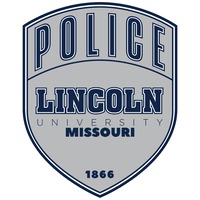In Case of Chemical Spill
All areas that use or store hazardous materials must be prepared to respond effectively if a spill or release occurs. Laboratory personnel must follow the proper emergency response plan for spills. It is expected that lab personnel will respond and clean up minor spills appropriately. In the event of a major spill, LUPD must be notified. Maintenance/janitorial personnel are not properly trained to clean up laboratory spills and will not be requested to do so. The Hazardous Materials Compliance Officer, covering campus Environmental Health and Safety, can properly advise on the proper clean-up techniques, materials and personal protective equipment which may be required.
A successful spill cleanup is one in which no one gets exposed or injured during the cleanup.
Lincoln University Police Department is in the process (03/2024) of developing a spill response training course and it is expected that all people working in an area where they may be required to respond to a spill complete this course.
DETERMINATIONS
Minor spill
These are spills that laboratory personnel may clean up appropriately and are ones in which ALL the following conditions are met:
- The material spilled is known.
- You know the properties of the material or have access to the MSDS.
- Appropriate personnel protective equipment is available & used (i.e., gloves, eye protection booties).
- You have the necessary materials to clean up the spill.
- You are trained to use the spill control kit for this material.
Major spill
These are spills which require you to contact Campus PD at 573-681-5555 or 5555 from a campus phone for assistance and are ones in which ANY of the following conditions apply:
- Someone has been injured.
- A fire or explosion has, or is likely to occur.
- The material spilled is highly toxic.
- The spill is in a common area (e.g., hallway) or other area accessible to the public.
- The spill requires a specialized response e.g. Hydrofluoric Acid.
- The material spilled is unknown.
- A responder is unsure whether the spill should be considered “Minor” or “Major”.
INITIAL RESPONSE
- Warn other personnel in the laboratory. If a volatile, flammable, or highly toxic material is spilled, have everybody extinguish flames and turn off spark-generating equipment and evacuate the laboratory immediately. Follow the instructions above for a major spill.
- If vapors are a concern and there are fume hoods in the area, fully open the sash.
- If clothing is contaminated, remove it and use the emergency shower to rinse the affected areas. If contaminates are in your eyes rinse for at least 15 minutes at an eyewash station.
- If there are medical emergencies call Campus Security at 573-681-5555 or 5555 from a campus phone for assistance and 911 for an ambulance, if required. Provide the following information:
- Your name and phone extension.
- Exact location of spill (building and room number).
- Name of material spilled.
- Quantity of material spilled.
- Information on injuries to personnel.
SPILL CLEAN UP PROCEDURES
- Obtain the required spill supplies, put on appropriate protective equipment.
- Use a spill sock or absorbent around floor drains and prevent contaminants from entering a sanitary sewer.
- Remove other materials from around the spill area to prevent cross contamination and tripping hazards.
- Work in teams. One person cleans the spill; the other should remain outside of the contaminated area and hand supplies to person cleaning.
- Contain the spill by pouring a ring of absorbent around it.
- Using forceps or tongs, remove broken glass or sharp objects and place in a container.
- Pour additional absorbent on the spill. Always pour the neutralizer or absorbent starting at the edges and moving toward the center of the spill site.
- Using a broom or brush, work the absorbent into the spill sweeping from the outer edge toward the center.
- Add more absorbent if the spill area appears to be wet or there is still free liquid.
- Repeat until all liquid is absorbed.
- Scoop up all absorbed material with brush and dustpan and place in a plastic bag. Include the spill sock if used. Remember, the absorbed material is still considered potentially hazardous.
- Wipe the spill area with a damp paper towel and place in a plastic bag.
- Dispose of all cleanup materials as hazardous waste and submit a waste pickup request
- Report the spill immediately to your supervisor and complete an incident report with the Compliance Officer.
SPECIAL PROCEDURES
Biohazard spill
Clean-up of biohazardous spills involves special considerations due to the potential for infectious aerosols. Refer to the Biosafety and Procedures Manual.
Radioactive material spill
Clean-up of radioactive materials involves some special consideration regarding monitoring of area to ensure effective clean-up. Refer to the Radiation Safety Program and Procedures Manual for details.
Hydrofluoric acid
Hydrofluoric acid (HF) has several physical, chemical, and toxicological properties that make it especially hazardous to handle. Due to these properties, HF spills are considered major spills and laboratory staff must call the Compliance Officer at 573-681-5555 to request assistance.
Mercury spills
Mercury poses significant hazards to the environment and potential health hazards to the occupants of the space if not cleaned up properly. For small mercury spills, a commercially available mercury spill kit must be used. For major spills involving mercury, a special mercury vacuum can be provided. Please contact Campus Security for assistance.

